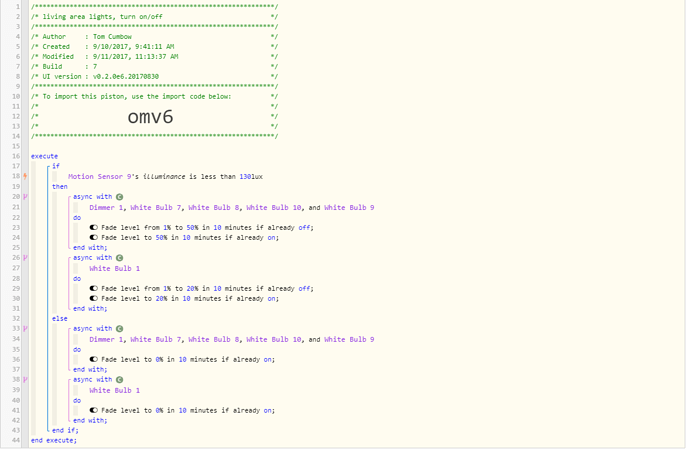What is the optimal way to accomplish the following goal?
Goal:
As day turns to evening, and my outside luminance sensor dips below 100 lux, fade living room lights from 0% to 50% over the course of 10 minutes.
Contraints:
Once the living room lights have been faded up to 50%, and outside luminance is safely below 100 lux, I’d like to be able to manipulate the light without this piston interferring.
Option 1:
Trigger: Outside Light Sensor’s illuminance drops below 100 lux
Fade level from 1% to 50% in 10 minutes
Never cancel tasks
Option 2:
Condition: Outside Light Sensor’s illuminance is less than 100 lux
Fade level from 1% to 50% in 10 minutes
Execute tasks on condition state change only
Option 3:
<something better I haven’t thought of>


